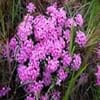Life Span
Perennial
Perennial
Type
Broadleaf Evergreen
Fruit
Origin
Hybrid origin, Japan
China
Types
Bigleaf hydrangea, Hortensia, Smooth hydrangea, Oakleaf hydrangea, Annabelle
Actinidia deliciosa chlorocarpa, Actinidia deliciosa deliciosa
Habitat
Forest edges, Hillside, Woods
Mountain forests
USDA Hardiness Zone
7-9
6-9
AHS Heat Zone
Not Available
9-7
Sunset Zone
21,22
4, 5, 6, 7, 8, 9, 12, 14, 15, 16, 17, 18, 19, 20, 21, 22, 23, 24
Habit
Upright/Erect
Vining/Climbing
Minimum Width
Not Available
Flower Color
Hot Pink
Light Yellow, Ivory
Flower Color Modifier
Bicolor
Bicolor
Fruit Color
Brown, Black
Tan, Brown
Leaf Color in Spring
Dark Green
Green, Light Green
Leaf Color in Summer
Dark Green
Green
Leaf Color in Fall
Dark Green
Light Green, Yellow green
Leaf Color in Winter
Dark Green
Light Green
Leaf Shape
Oblovate
Heart-shaped
Plant Season
Spring, Summer, Fall, Winter
Spring, Summer, Fall
Sunlight
Full Sun, Partial Sun, Partial shade
Full Sun, Partial Sun
Type of Soil
Loam
Clay, Loam
The pH of Soil
Acidic, Neutral
Acidic, Neutral
Soil Drainage
Well drained
Average
Bloom Time
Fall, Late Fall, Early Winter, Winter
Late Spring, Early Summer
Tolerances
Not Available
Drought
Where to Plant?
Container, Ground
Ground
How to Plant?
Seedlings, Stem Planting
Layering, Softwood cuttings
Plant Maintenance
Medium
Medium
Watering Requirements
Not Available
Water daily during growing season
In Summer
Drought Tolerant
Lots of watering
In Spring
Moderate
Moderate
In Winter
Average Water
Average Water
Soil pH
Acidic, Neutral
Acidic, Neutral
Soil Type
Loam
Clay, Loam
Soil Drainage Capacity
Well drained
Average
Sun Exposure
Full Sun, Partial Sun, Partial shade
Full Sun, Partial Sun
Pruning
Remove damaged leaves, Remove dead branches, Remove dead leaves
Prune for shortening long shoots, Prune in early summer, Prune in late winter
Fertilizers
All-Purpose Liquid Fertilizer
Self-fertile
Pests and Diseases
Red blotch
Armillaria root rot, Armored scales, Bleeding canker, Botrytis Blight, Crown gall, Nematodes, Phytophthora Root Rot, Red blotch
Plant Tolerance
Not Available
Drought
Flower Petal Number
Semi-Double
Single
Foliage Texture
Medium
Medium
Foliage Sheen
Glossy
Matte
Attracts
Bees, Flies
Not Available
Allergy
Chest tightness, Diarrhea, Dizziness, Nausea, Vomiting
Inflammation, Mouth itching, Throat itching
Aesthetic Uses
Not Available
Not Used For Aesthetic Purpose
Beauty Benefits
Not Available
Beautiful Skin, Protects from sun damage
Edible Uses
Not Available
Yes
Environmental Uses
Air purification
Air purification
Medicinal Uses
Fever, Kidney problems, Urinary tract problems
constipation, Heart problems, Low Blood Pressure
Part of Plant Used
Flowers, Root
Fruits
Other Uses
Not Available
Used As Food, Used for its medicinal properties
Used As Indoor Plant
Not Available
No
Used As Outdoor Plant
Yes
Yes
Garden Design
Container, Cutflower, Feature Plant, Hedges, Mixed Border, Topiary, Bonsai, Espalier
Edible, Fruit / Fruit Tree, Rock Garden / Wall, Vine
Botanical Name
CAMELLIA hiemalis 'Kanjiro'
ACTINIDIA deliciosa
Common Name
Kanjiro Camellia, Snow Camellia
Chinese Gooseberry, Fuzzy Kiwi, Kiwi
In Hindi
Hydrangea
कीवी फल
In German
Hortensie
Kiwi, Chinesischer Strahlengriffel
In French
Hortensia
Kiwi, Groseille de Chine, Yang Tao, Souris végétale
In Spanish
Hortensia
kiwi, kivi, actinidia
In Greek
υδραγεία
Ακτινίδια
In Portuguese
Hortênsia
Quiuí
In Polish
Hortensja
Owoc kiwi
In Latin
Hibiscus
Kiwi fructum
Phylum
Not Available
Magnoliophyta
Class
Not Available
Magnoliopsida
Order
Not Available
Ericales
Family
Theaceae
Actinidiaceae
Genus
Not Available
Actinidia
Clade
Not Available
Angiosperms, Asterids, Eudicots
Tribe
Not Available
Not Available
Subfamily
Not Available
Not Available
Number of Species
Not Available
Properties of Kanjiro Camellia and Kiwifruit
Wondering what are the properties of Kanjiro Camellia and Kiwifruit? We provide you with everything About Kanjiro Camellia and Kiwifruit. Kanjiro Camellia doesn't have thorns and Kiwifruit doesn't have thorns. Also Kanjiro Camellia does not have fragrant flowers. Kanjiro Camellia has allergic reactions like Chest tightness, Diarrhea, Dizziness, Nausea and Vomiting and Kiwifruit has allergic reactions like Chest tightness, Diarrhea, Dizziness, Nausea and Vomiting. Compare all the properties and characteristics of these two plants. Find out which of these plant can be used as indoor plant. If you are interested to decorate your house and garden, find out aesthetic uses, compare them and select the plant which will beautify your surrounding. Along with beautification, try comparing medicinal and edible uses of Kanjiro Camellia and Kiwifruit and you can choose the plant having best and most benefits.
Season and Care of Kanjiro Camellia and Kiwifruit
Season and care of Kanjiro Camellia and Kiwifruit is important to know. While considering everything about Kanjiro Camellia and Kiwifruit Care, growing season is an essential factor. Kanjiro Camellia season is Spring, Summer, Fall and Winter and Kiwifruit season is Spring, Summer, Fall and Winter. The type of soil for Kanjiro Camellia is Loam and for Kiwifruit is Clay, Loam while the PH of soil for Kanjiro Camellia is Acidic, Neutral and for Kiwifruit is Acidic, Neutral.
Kanjiro Camellia and Kiwifruit Physical Information
Kanjiro Camellia and Kiwifruit physical information is very important for comparison. Kanjiro Camellia height is 335.00 cm and width 255.00 cm whereas Kiwifruit height is 610.00 cm and width Not Available. The color specification of Kanjiro Camellia and Kiwifruit are as follows:
Kanjiro Camellia flower color: Hot Pink
Kanjiro Camellia leaf color: Dark Green
Kiwifruit flower color: Light Yellow and Ivory
- Kiwifruit leaf color: Green and Light Green
Care of Kanjiro Camellia and Kiwifruit
Care of Kanjiro Camellia and Kiwifruit include pruning, fertilizers, watering etc. Kanjiro Camellia pruning is done Remove damaged leaves, Remove dead branches and Remove dead leaves and Kiwifruit pruning is done Prune for shortening long shoots, Prune in early summer and Prune in late winter. In summer Kanjiro Camellia needs Drought Tolerant and in winter, it needs Average Water. Whereas, in summer Kiwifruit needs Lots of watering and in winter, it needs Average Water.


